Bud Break in Chile
While we were busy crushing and pressing in the fall, our Chilean vineyards were going through bud break.
Bud break is the start of the grape vine’s annual cycle. Bud break is a relaxing time in the vine’s life as long as they don’t experience any intense weather occurrences, such as frost. Frost can kill the buds or delay their growth.
This season Chile had a some cold weather come through the vineyards. Thankfully our vineyards were able to keep the vines protected and did not have any frost damage. Take a look at the bud break in our Chilean vineyards and get a sneak peak at the harvest ahead.
Bud Break in Chile – October 2019
Grapes Available: Chardonnay, Pinot Grigio, Sauvignon Blanc, Viognier, Cabernet Sauvignon, Carmenere, Cabernet Franc, Malbec, Merlot, Petite Verdot, Pinot Noir, and Syrah
Juices Available: Carmenere, Cabernet Sauvignon, Cabernet Franc, Cabernet/Merlot Blend, Malbec, Merlot, Petite Verdot, Pinot Noir, Syrah, Chardonnay, Pinot Grigio, Sauvignon Blanc, and Viognier
Fresco Juices Available: Cabernet Sauvignon, Carmenere, Merlot, Malbec, Chardonnay, Sauvignon Blanc, Viognier, Chardonnay/Semillon Blend
For more information on making wine, please visit our website at www.juicegrape.com and our Facebook Page for real time harvest updates. Our Chilean wine grapes arrive in late-April and early-May. If you are interested in making an order please email sales@juicegrape.com or give us a call at 877-812-1137 to discuss this season’s harvest.
How to Avoid Winemaking Faults & Flaws Class – Saturday February 8th, 2020
Have you ever had a funky smelling wine?
Not sure what caused that smell?
Come to Musto Wine Grape’s Faults & Flaws class and learn how to counteract and avoid those funky smells in your wines.
It’s only $5.99 to attend this class! (a major steal) Click HERE to secure your seat in class. Seating will be limited to 25 people.
Faults & Flaws Class will be held at our store in Hartford, CT (101 Reserve Rd, Hartford, CT 06114) on Saturday February 8th at 10:00AM.
Please email cmusto@juicegrape.com if you have any questions.
Hope to see you there!
2020 is a Great Time to Join the American Wine Scoiety
The American Wine Society is a group of passionate wine lovers from all over the US. Many of these wine enthusiast are home winemakers too!
In Connecticut alone, there are over 4 chapters, each with their own vibe. A few of these chapters are focused solely on wine tasting and exploring new wines. Others chapters are focused on wine tasting and home winemaking. There is a chapter for everyone!
Why You Should Join:
-
Informative and exciting wine tastings close to home
-
Meet other wine loving people
-
Discounts at wineries and other businesses
-
Wine cruises and other travel
-
Wine judge certification programs
-
Liability insurance when hosting wine tastings
-
New friends
-
And much, much, more!
As you start 2020, we wanted to give a big shout out to the AWS. They have been a BIG supporter of Musto Wine Grape and we truly appreciate all the love and support they have given us over the years.
It is a great association to join if you are looking for a way to connect with more wine-liking individuals.
Click here to learn more information about the American Wine Society.
How to Make Carmenere Wine from Chile
Carmenere is a grape with a very “peppered” history. It has its roots in Bordeaux as it was widely planted in the Medoc region of France by the Ancient Romans. It was often times used as a blender, like Petit Verdot, and is considered one of the original six Bordeaux grape varieties. There is a legend that says Carmenere is actually a clone of Cabernet Sauvignon as both grapes share a similar lineage. In 1855 Carmenere cuttings were brought over to Chile, and for a long time Chilean Carmenere was mistaken for Merlot vines! It wasn’t until the 19th century that they were able to distinguish between the two. Both grapes are now used in 50/50 blends, producing delicious fruit forward wines.
Now Carmenere is considered a bold standalone grape and wine. Deep crimson in color, with bold dark berries on the palate, this wine is made for the adventurous. Chile has become one of the top Carmenere producing regions. This is because Chile has minimal rainfall, and soils composed of volcanic-alluvial, sand, clay, and decomposed granite. Carmenere flourish’s here. MWG’s Carmenere grapes and juices are sourced from the Colchagua and Curico Valleys in the heart of Chile. The micro-climates throughout these valleys allow Carmenere to mature to its full potential.
Flavor Profile:
Blackberry jam, ripe raspberry, baking spices, plum, and at times – vanilla, licorice, green pepper, and black pepper.
Yeast Suggestions:
-
CSM: Reduces vegetal aromas, brings out intense complex flavors of berries, spice, and licorice.
-
D254: Brings out fruit flavors such as berry, plum, and mild spice
-
BDX: Promotes soft tannins, secures color, and ferments at low temperatures
Making Chilean Carmenere:
-
Crush your grapes into your fermentation vessel.
-
Add your pectic enzyme or color pro and let the must warm up overnight.
-
Please Note: we DO NOT suggest doing a cold soak on the Chilean grapes. They have traveled very far already, and it is better for your flavor profile if they do not sit on the skins for extra contact time. This can cause further extraction of methoxypyrazine (green bell pepper).
-
-
After 24 hours take your Brix, TA, and pH measurements. Make adjustments if needed.
-
Once your must has hit the temperature required by your selected yeast, you can pitch your yeast.
-
Fermentation tannins can be added at this point. We suggest adding Tannin FT Rouge and Opti-Red when making Carmenere.
-
If you are using additional yeast nutrients you will want to add them at the right time as well. Fermaid O is added at the beginning of fermentation (1 day after you set your yeast). Fermaid K is added at 1/3 depletion of Brix. Follow the directions on the yeast nutrient packages.
-
-
After you have made your adjustments and added your yeast, cover you fermentation vessel with a sheet or cheese cloth. This will allow gases to release during fermentation, but protect the must for outside microbes and fruit flies.
-
Every day during fermentation punch down your must at least three times a day, take your Brix measurement, and temperature measurements. It is recommended to record these values each day.
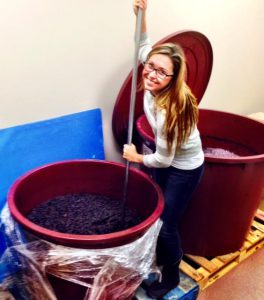
-
You want to make sure your Brix levels are dropping and are having a healthy fermentation. You also want to monitor your temperature levels. If your temperature levels get too high you might “burn off” some aromas, and if your temperature levels get too low you might get a stuck fermentation.
-
When your hydrometer reaches 0.90 you are at dryness
-
-
We suggest adding Malolactic culture to your Carmenere. It will help convert the harsh “green apple like” acid to “creamy like” acid, producing a more supple mouthfeel.
-
There are three time periods you can add Malo. We suggest adding your Malo 24-48 hours after fermentation has started. You can purchase a Chromatography test to check that Malo has completed.
-
-
When you hydrometer reaches a brix of -2 – 0 (SG of .990 to 1.000) your are at dryness and can press your must.
-
Once your juice has been transferred into your aging vessel make sure to check your wine and airlock weekly. Be sure it is topped off.
-
Rack every 1-2 months.
-
Bottle after 8-12 months or transfer into oak for more aging.
Recipe by Winemaker Christina Musto
For more information on making wine, please visit our website at www.juicegrape.com and our Facebook Page for real time harvest updates. Our Chilean wine grapes arrive in late-April and early-May. If you are interested in making an order please email sales@juicegrape.com or give us a call at 877-812-1137 to discuss this season’s harvest.
PS- Check out MWG’s trip to Chile from 2018. Lots of great history information about the region! Click here to read more..
How much wine will a case of grapes make from Chile or South Africa?
Each case of wine grapes from Chile and South Africa is 18lbs. Depending on the grape variety, you should yield about 1.5-2 gallons of must per case.
Certain wine grapes are “juicier” than others. For example, Syrah is considered a “juicer” grape than a Cabernet. If you look closely, you can see the difference in the shape of the berries. The Syrah grape has more of an “egg” shaped berry to it. The Cabernet is more of a circle shaped berry. The berry size, climate, soil, and vineyard practices will all help determine how much juice is produced in each berry, and the berry intensity.
Usually each case of 18lb wine grapes will yield about 1.25-1.50 gallons of finished wine.
That equates to about 7 bottles of wine.
Other factors that influence how much must and/or juice you yield per case:
-
How your rollers are positioned in your crusher destemmer
-
How much you press after fermentation is completed
-
How much wine you loose during racking
-
If you barrel age your wine
-
If drink a lot of wine during bottling 😉
Keep these topics in mind when you are deciding on how many cases of grapes you want purchase versus how much wine you want to make.
Interested in making wine from Chilean grapes? Check out this POST
Interested in making wine from South African grapes? Check out this POST
We hope this information helps! If you have any questions please do not hesitate to reach out via sales@juicegrape.com or 877-812-1137. Cheers!






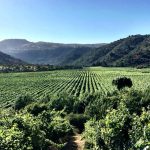



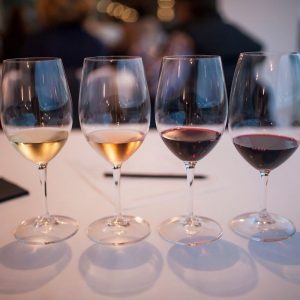
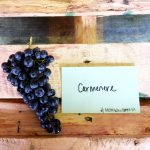
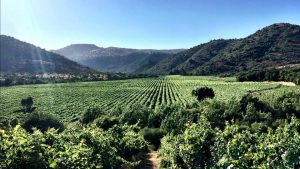
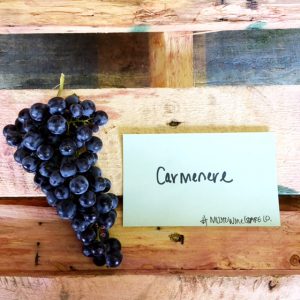
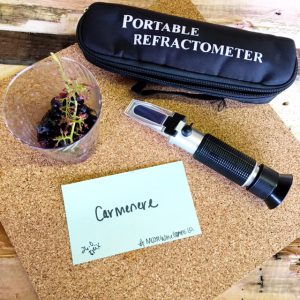
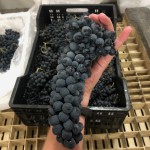

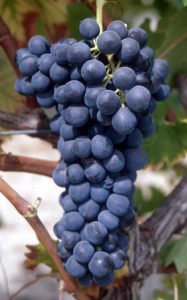
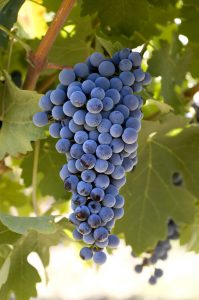
Recent Comments